
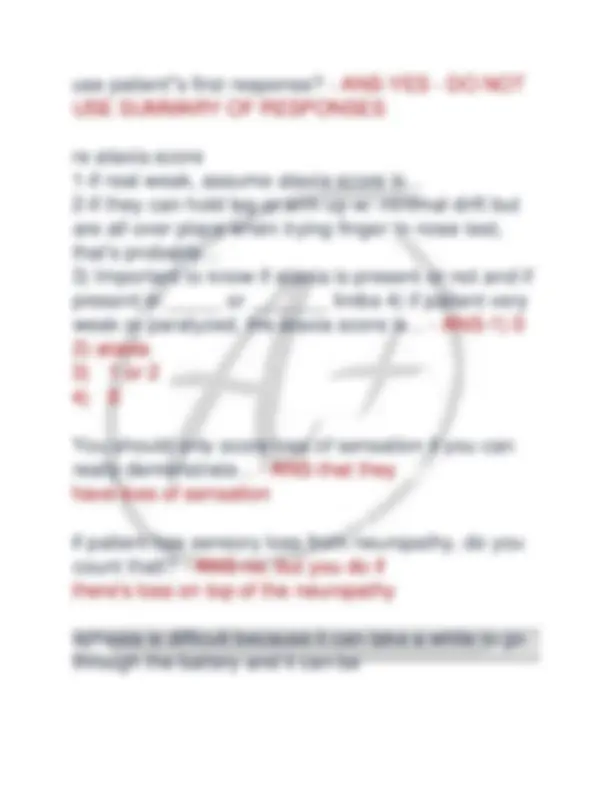
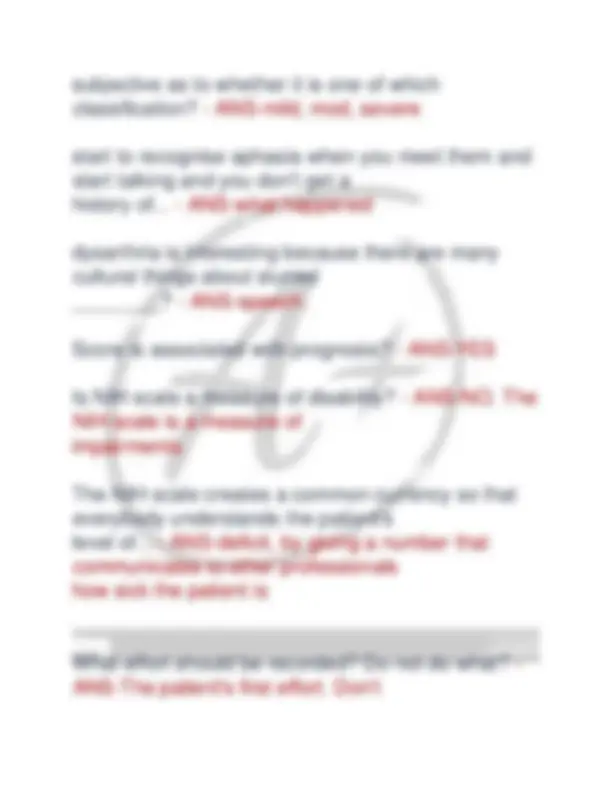
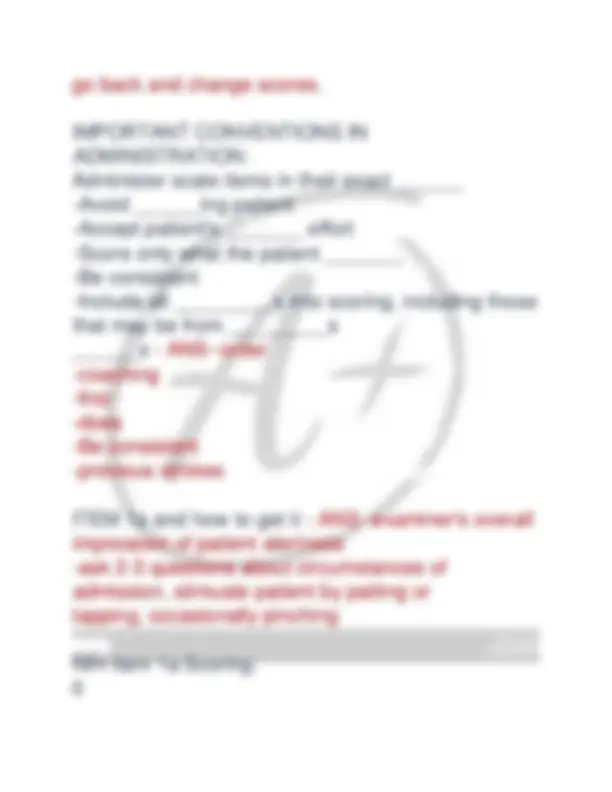
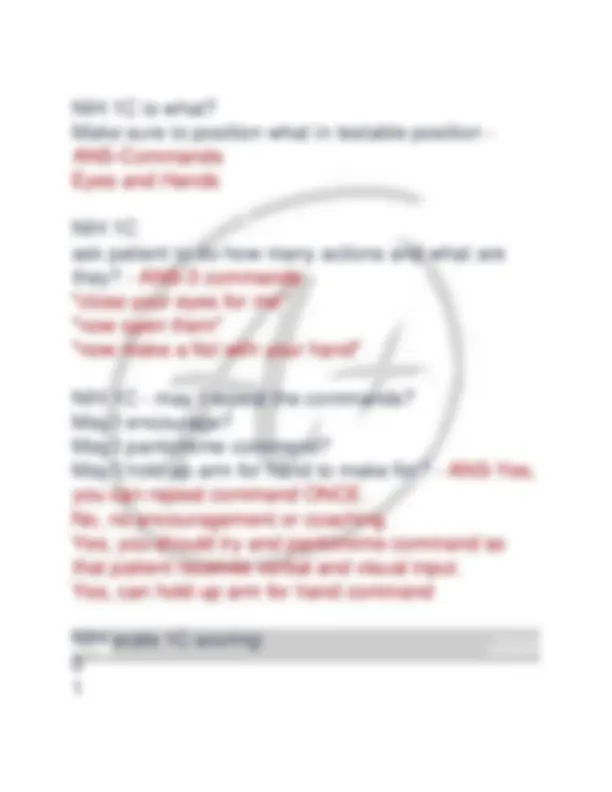

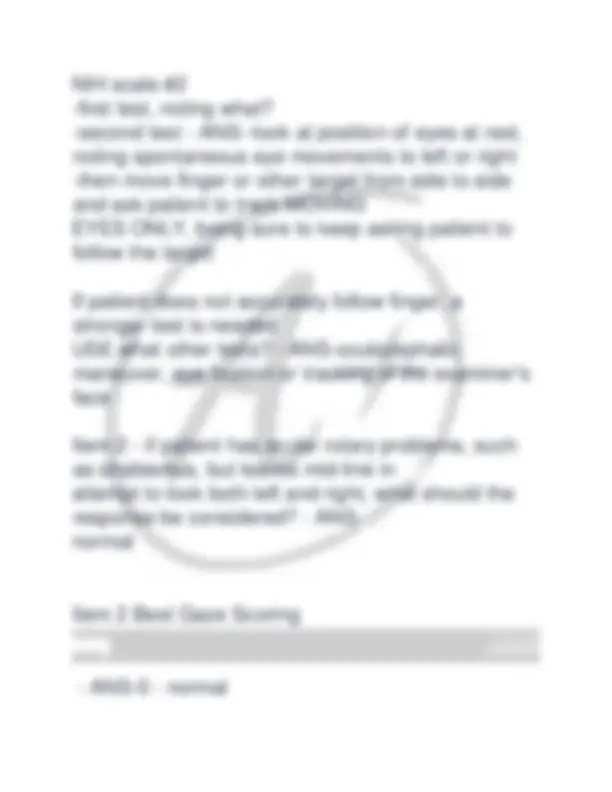
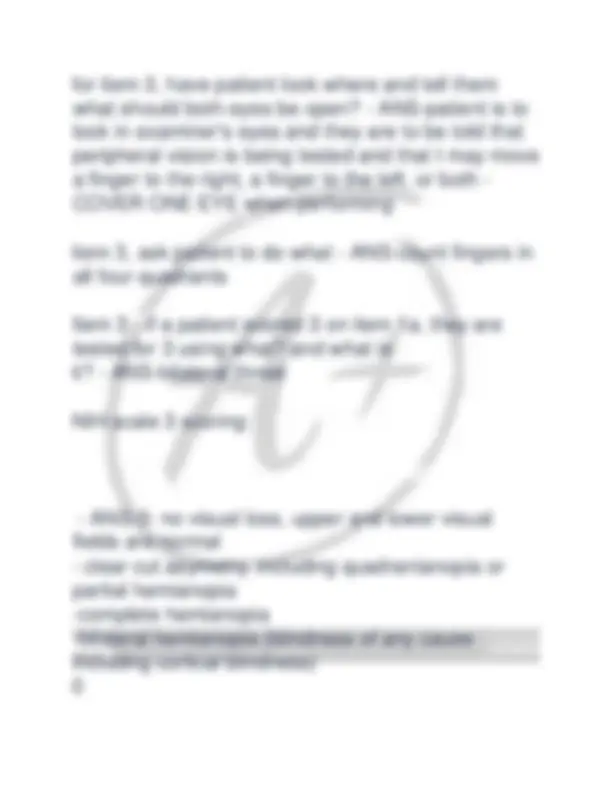

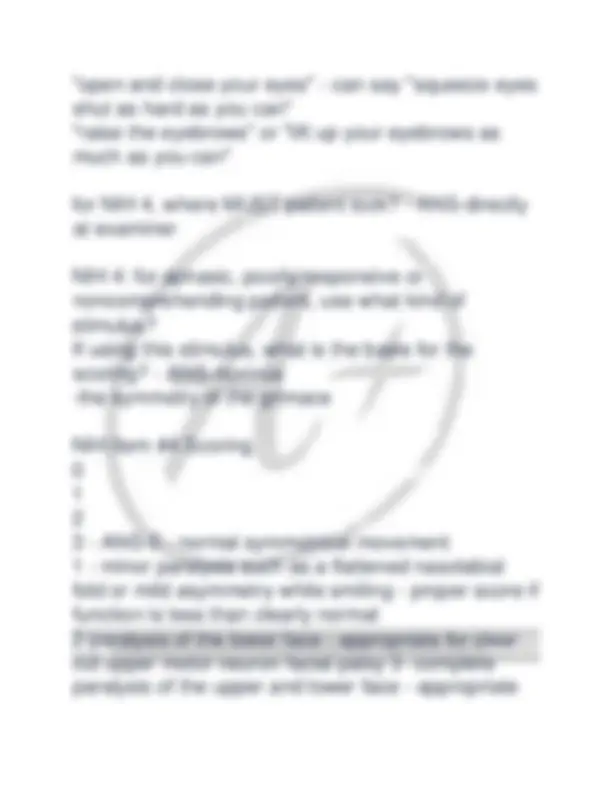
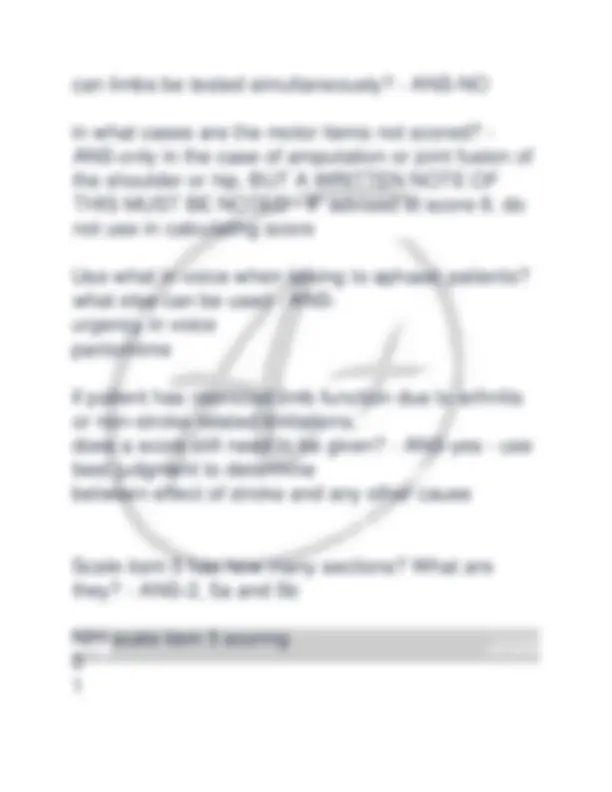
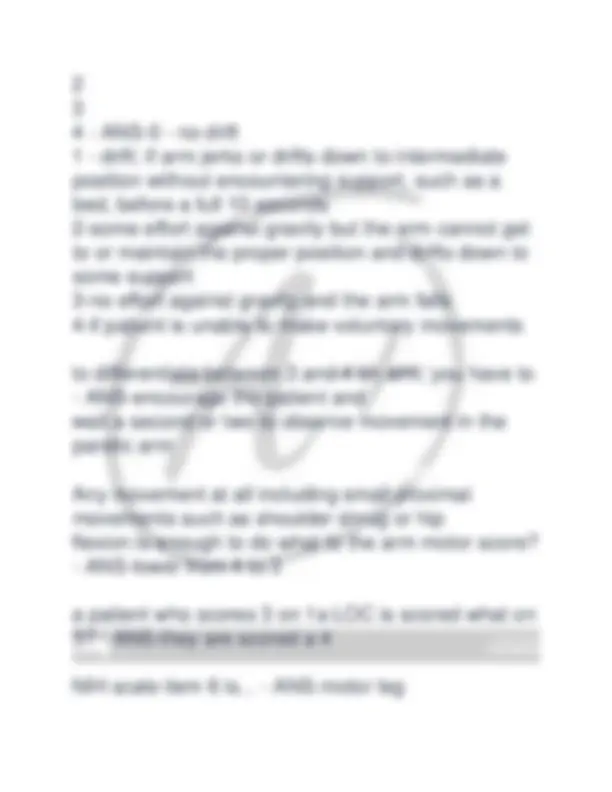
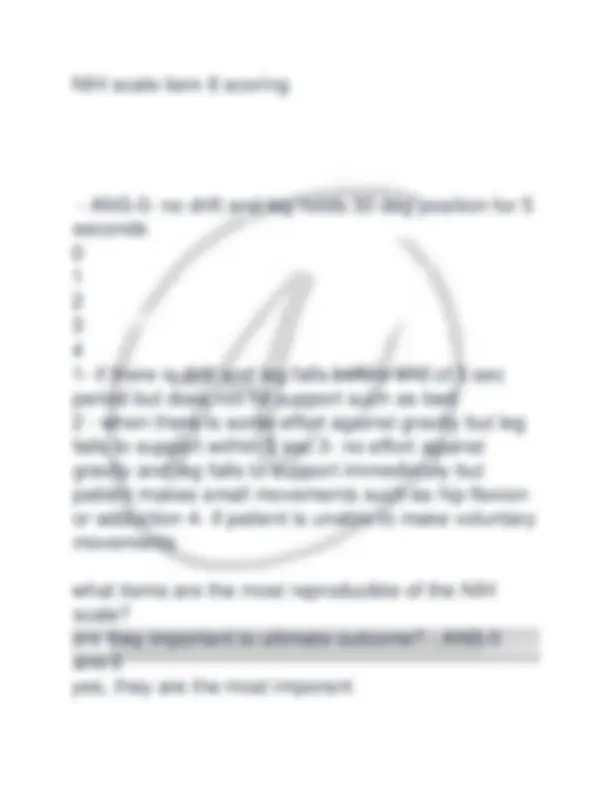
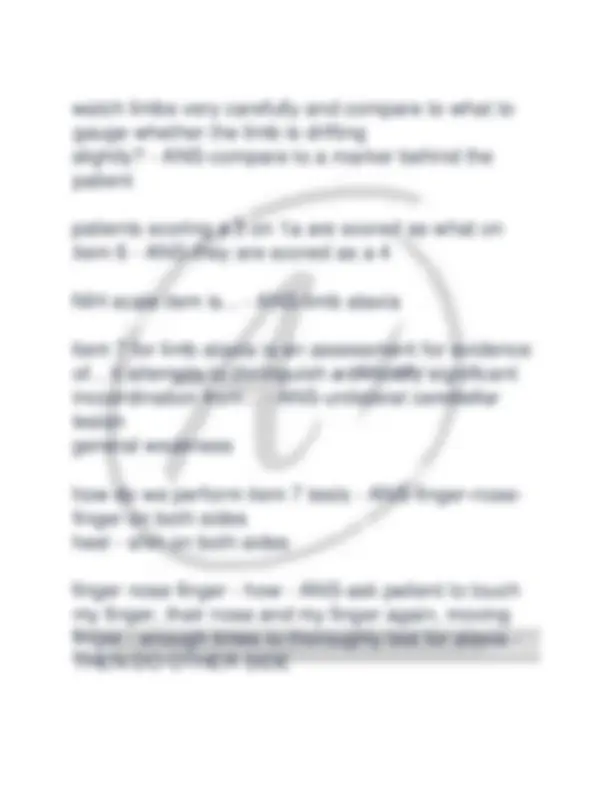
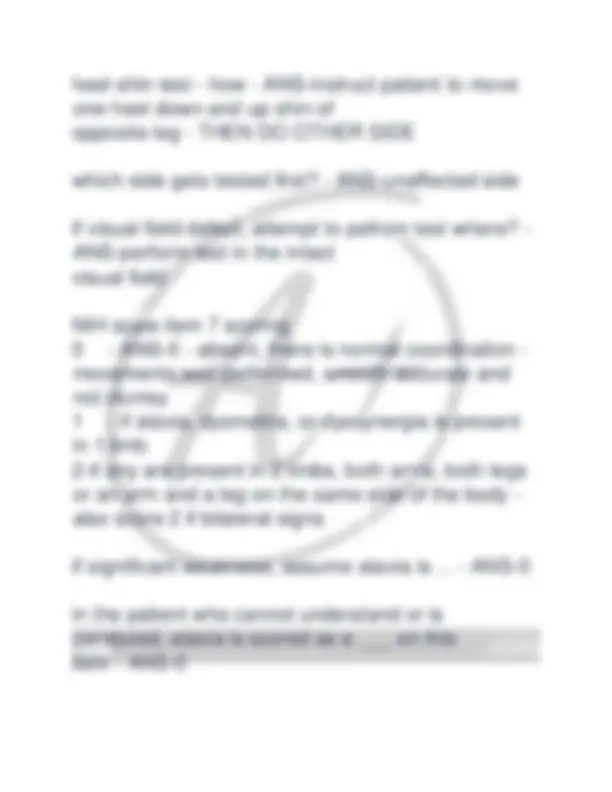
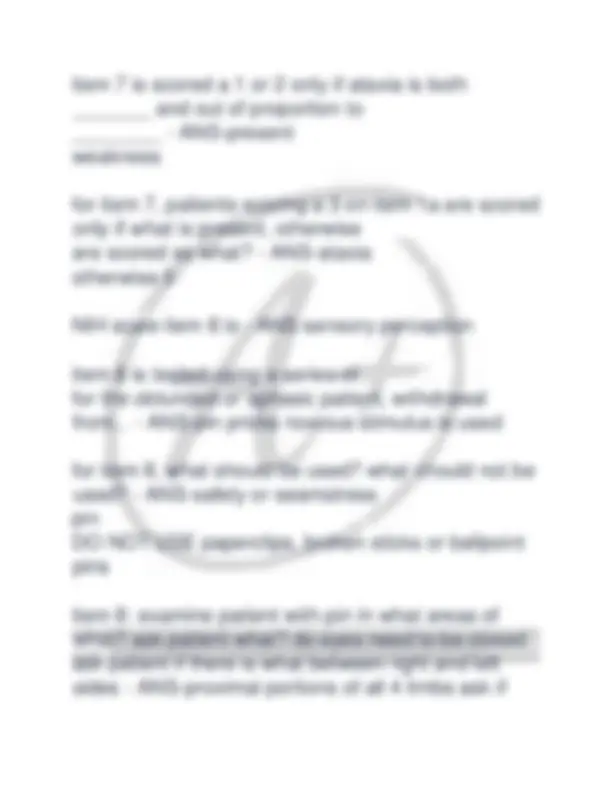
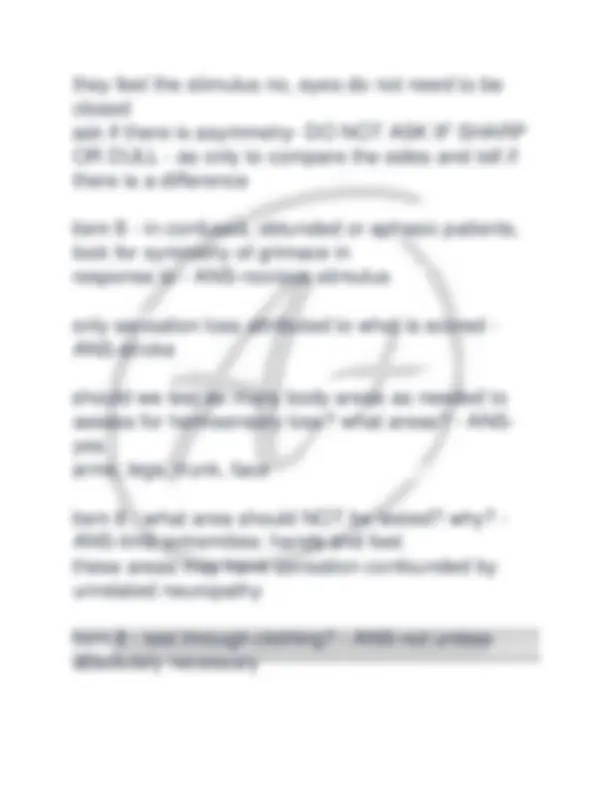
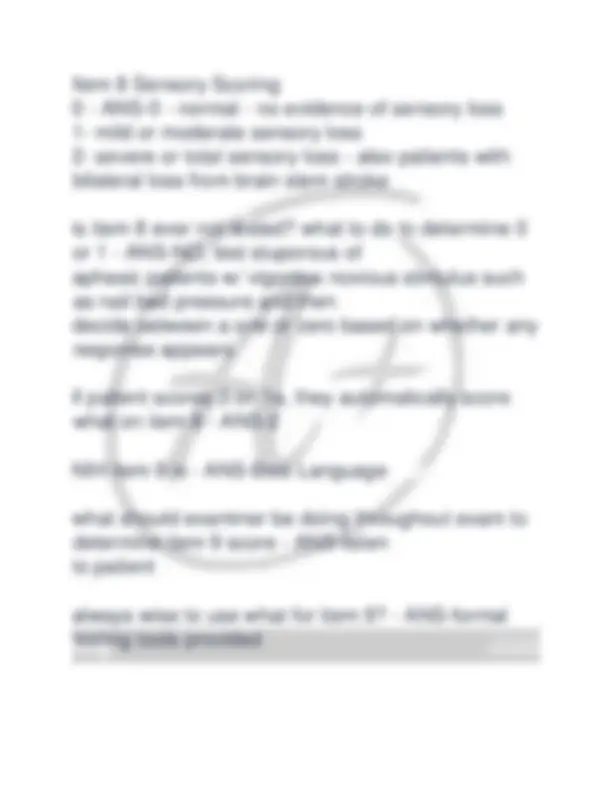
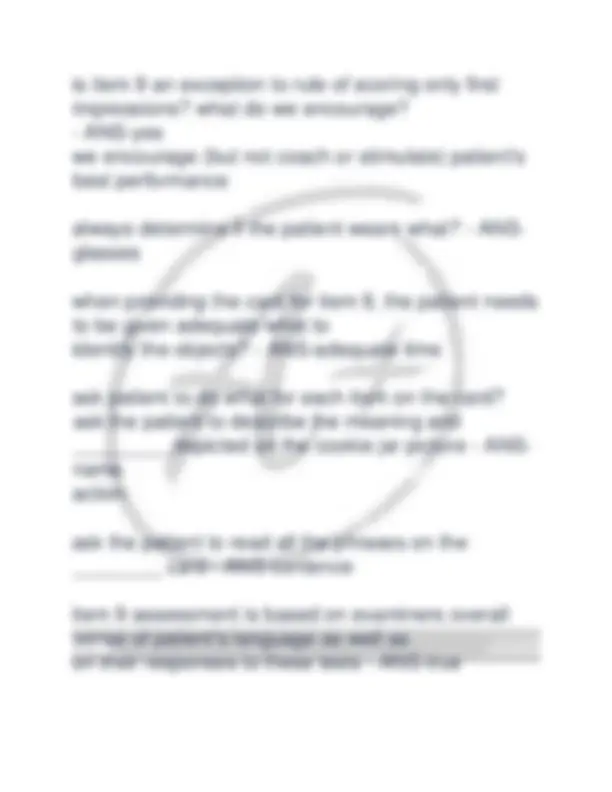
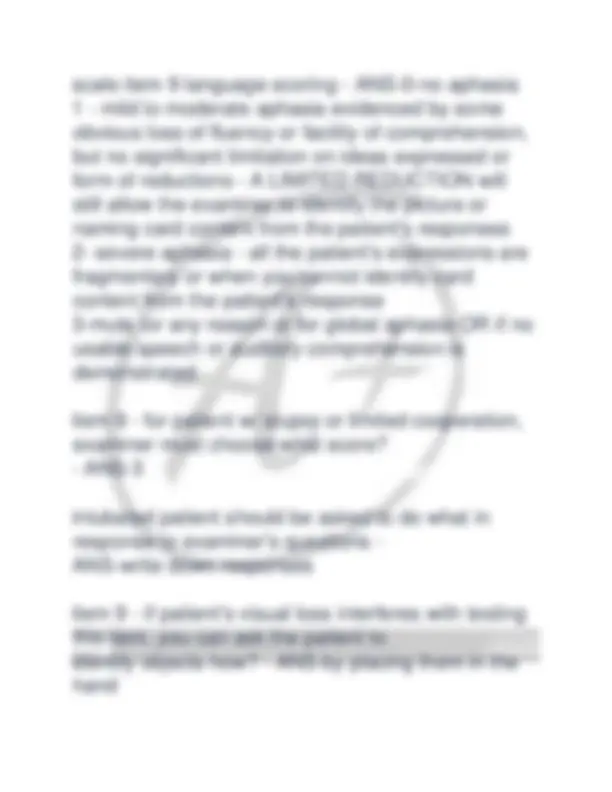
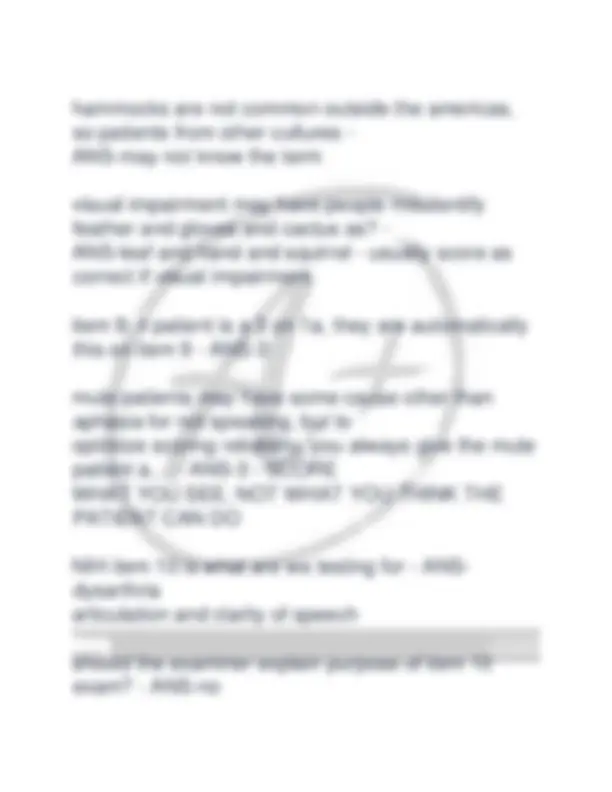
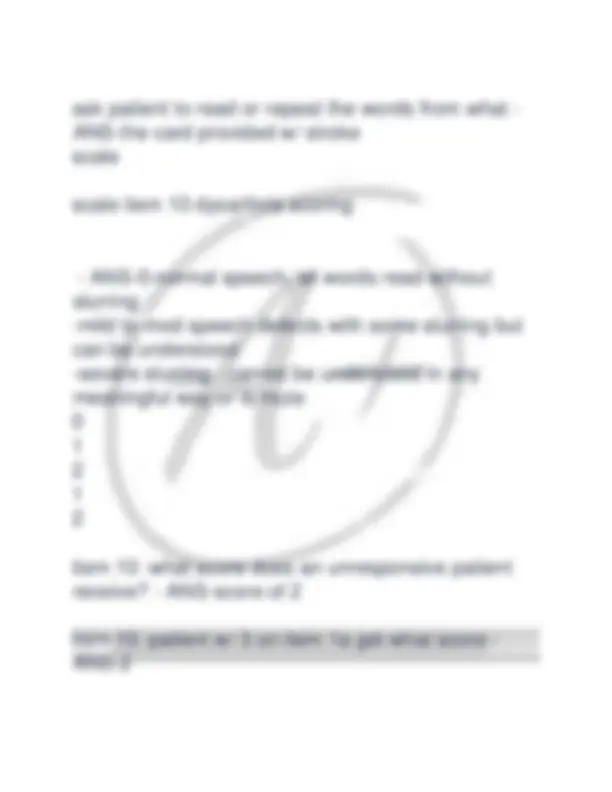
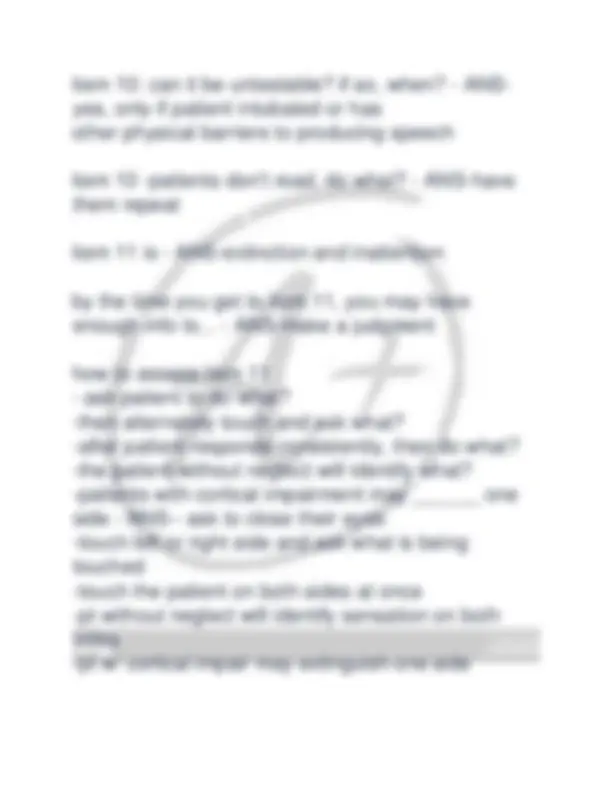
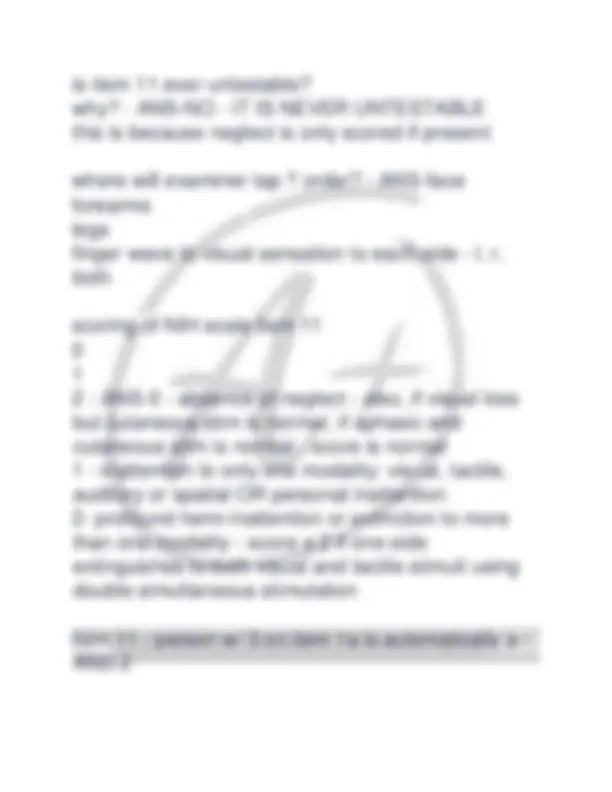



Study with the several resources on Docsity

Earn points by helping other students or get them with a premium plan


Prepare for your exams
Study with the several resources on Docsity

Earn points to download
Earn points by helping other students or get them with a premium plan
Community
Ask the community for help and clear up your study doubts
Discover the best universities in your country according to Docsity users
Free resources
Download our free guides on studying techniques, anxiety management strategies, and thesis advice from Docsity tutors
NIH Stroke Scale Update Test Questions with 100% Correct Answers | Updated & Verified
Typology: Exams
1 / 32

This page cannot be seen from the preview
Don't miss anything!

























NIH Stroke Scale Update Test Questions with 100% Correct Answers | Updated & Verified how much time to budget to perorm NIH scale - ANS- 7 - 10 mins How many items on the NIH stroke scale? - ANS- 11 NIH Stroke scale is - ANS-an 11-item clinical evaluation instrument widely used in clinical trials and practice to assess neurologic outcome and degree of recovery from stroke. NIH Stroke Scale is used to quantify the effects of acute cerebral ischemia on levels of ... (7 items) - ANS-levels of:
consciousness vision motor function (facial and extremities) cerebellar function sensation language extinction or inattention NIH SS is used to measure patient's status after a stroke and to assess the outcome after - ANS-treatment Should the patient be coached? Should you go back and rethink a particular assessment? - ANS-NO Having what when using NIH scale is important? - ANS-reference materials DO NOT RATE what you think the patient wants to do or what you think they can do, RATE ONLY - ANS-rate only what they actually do
subjective as to whether it is one of which classification? - ANS-mild, mod, severe start to recognise aphasia when you meet them and start talking and you don't get a history of... - ANS-what happened dysarthria is interesting because there are many cultural things about slurred ________? - ANS-speech. Score is associated with prognosis? - ANS-YES Is NIH scale a measure of disability? - ANS-NO. The NIH scale is a measure of impairments. The NIH scale creates a common currency so that everybody understands the patient's level of... - ANS-deficit, by giving a number that communicates to other professionals how sick the patient is What effort should be recorded? Do not do what? - ANS-The patient's first effort. Don't
go back and change scores. IMPORTANT CONVENTIONS IN ADMINISTRATION: Administer scale items in their exact ______
2 - ANS--answers both qs correctly
NIH 1C is what? Make sure to position what in testable position - ANS-Commands Eyes and Hands NIH 1C ask patient to do how many actions and what are they? - ANS-3 commands "close your eyes for me" "now open them" "now make a fist with your hand" NIH 1C - may I repeat the commands? May I encourage? May I pantomime command? May I hold up arm for hand to make fist? - ANS-Yes, you can repeat command ONCE. No, no encouragement or coaching. Yes, you should try and pantomime command so that patient receives verbal and visual input. Yes, can hold up arm for hand command NIH scale 1C scoring: 0 1
NIH scale #
for item 3, have patient look where and tell them what should both eyes be open? - ANS-patient is to look in examiner's eyes and they are to be told that peripheral vision is being tested and that I may move a finger to the right, a finger to the left, or both - COVER ONE EYE when performing item 3, ask patient to do what - ANS-count fingers in all four quadrants Item 3 - if a patient scored 3 on item 1a, they are tested for 3 using what? and what is it? - ANS-bilateral threat NIH scale 3 scoring:
item 3: if patient has severe monocular visual loss d/t intrinsic eye disease and visual fields in other eye are normal, examiner should score as - ANS-normal if there is unilateral blindness or enucleation, what is scored - ANS-visual fields in the remaining eye arbitrary rule that if they extinguish even if intact to confrontation, visual field item is scored as a... - ANS- 1 NIH item 4 is... - ANS-facial palsy in NIH #4,you ask patient - ANS-"show me your teeth," if no teeth in say "show me your gums"
score for obtunded or comatose patient or one with unilateral-lower motor neuron facial weakness decreased spontaneous and forced facial movements are most prominent at what location? - ANS-the mouth if there is a clear cut asymmetry of the smile, the score is... - ANS-two, all other subtle asymmetries are scored as a one score of 3 re: face is reserved for unusual complete paralysis seen with some strokes of what kind? - ANS-some brain stem strokes NIH scale item 5 is... - ANS-Item 5 - Motor Arm what is proper positioning for item 5 motor arm movement? - ANS-extend arms 90 deg if sitting OR 45 deg if supine item 5 leg test always in what position and how many deg - ANS-leg motor test supine and extended 30 deg
for item 5 motor arm, score a drift if arm does when and when? - ANS-if arm falls before 10 seconds as you count down out loud for motor leg, score a drift if leg does what and when
4 - ANS- 0 - no drift 1 - drift: if arm jerks or drifts down to intermediate position without encountering support, such as a bed, before a full 10 seconds 2 - some effort against gravity but the arm cannot get to or maintain the proper position and drifts down to some support 3 - no effort against gravity and the arm falls 4 - if patient is unable to make voluntary movements to differentiate between 3 and 4 on arm, you have to
NIH scale item 6 scoring